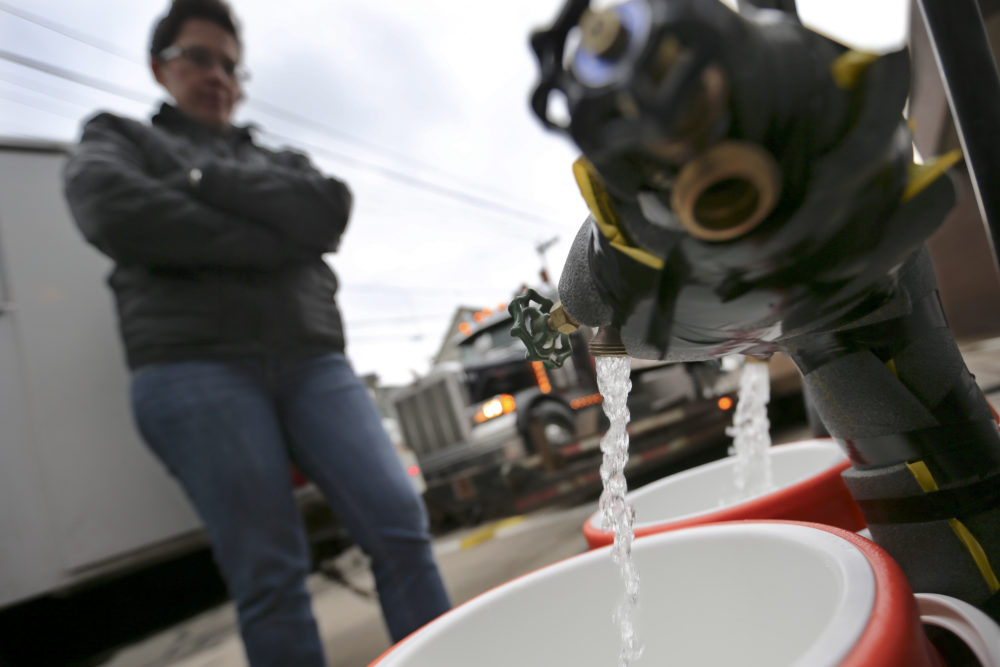Advertisement
Commentary
Water Is More Expensive Than Ever. Massachusetts Should Do More To Help Residents

For many people in Massachusetts, water and sewer costs are lumped in with the cable bill, car payments and other expenses set up for automatic payment — mostly out of sight and out of mind. But if you pay any attention at all, you’ve likely noticed that your water and sewer bills have been increasing over the past few years.
Winthrop announced a 35% water rate increase earlier this year. In Pittsfield, sewer rates increased by 50% in January 2019, and water rates will increase by 20% by the end of this year. Boston’s water and sewer rate increases in 2019 are smaller at 2.85%, but the Boston Water and Sewer Commission predicts additional compounded increases of 3.65% each year from 2020 to 2023. By 2022, water bills may be unaffordable for 36% of households in the United States.
I am part of a research team at Northeastern University that is studying water unaffordability and its impacts in 12 Massachusetts communities including Boston, Brockton, Cambridge, Lawrence, Lowell, New Bedford, Springfield, Somerville, Quincy and Worcester. Our findings, released this week in new report, “A Drop in the Bucket,” are sobering.
By 2022, water bills may be unaffordable for 36% of households in the United States.
In Chelsea, where water and sewer rates increased by almost 8% last year, one Chelsea resident we interviewed reported cutting back on needed medications to afford water. Another resident reported a catch 22: she was unable to afford a money-saving vegetable garden because it cost too much to water the produce.
What’s causing the dramatic increase in rates? Many factors, including the need to repair and upgrade aging infrastructure, including some pipes laid down nearly a century ago. Ironically, the decreased demand that comes with more effective conservation efforts results in increased prices. The growing effects of climate change also play a role — violent rainstorms and flooding require increased efforts to manage stormwater that infiltrates the household water system.
Someone has to pay for these increased expenses. The problem is, while we are all equal in the amounts of water we reasonably need to live — Americans average about 80 to 100 gallons a day — we are not equal in our ability to pay for it. And when water is unaffordable, it leads to a host of additional problems, including health issues, and even home foreclosures.
Like most of the other communities we surveyed, Chelsea offers some discounts to low-income seniors who both own and occupy the property on the water account. While these discounts may be valuable to a small slice of consumers, they are far from adequate, given the level of need as rates continue to rise. Moreover, discounts that favor homeowners are, in Massachusetts, discounts that effectively favor white residents, who are much more likely to own homes than are people of color in the state.
Advertisement
We can’t afford to ignore the impact of rising water prices on the state’s low-income residents.
Income — not age or homeownership — is surely the best indicator of need for assistance in paying bills, yet none of the communities we surveyed offer purely income-based discount programs.
Rising water costs is a problem nationwide, and across the country, some communities are acting decisively to address the issue with more comprehensive programs than what we found in Massachusetts.
In the vanguard is Philadelphia, which adopted a means-based water affordability plan in 2017. The program offers reduced water rates and even forgiveness of delinquent bills for those who participate by making smaller, more affordable payments based on their incomes. The program expects to be financially sustainable, because more customers will be able to pay their bills, and the city will avoid expensive collections processes and defaults.
Some smaller cities have also adopted programs that better reflect customers’ needs. Samammish, Washington, a city of approximately 65,000, allows low-income renters to qualify for rebates, understanding that landlords pass increase water and sewer costs on to their tenants. Larger cities, like Portland, Oregon, have also developed innovative approaches to help renters with their growing water bills. This stands in stark contrast to Massachusetts communities, where only homeowners can qualify for assistance.
Massachusetts has the eighth highest income gap between rich and poor in the nation. We can’t afford to ignore the impact of rising water prices on the state’s low-income residents. The United Nations has repeatedly recognized that affordable water and sanitation are human rights. We all know that they are basic human needs.
Local Massachusetts leaders should join other pioneering communities nationwide that are committed to using policy innovations to ensure that both water and sanitation are truly available to all.
Martha F. Davis is the lead author of "A Drop in the Bucket: Water Affordability Policies in Twelve Massachusetts Communities."
